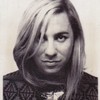If you look into the dimly-lit crowd of a nightclub or across the field at most festivals, you're likely to see a balance of male and female fans. Research tells us that the dance music audience is almost evenly split between men and women, but as we reported earlier this year, that equality is not reflected in DJ booths, particularly at festivals.A look at lineups of seven major festivals in North America showed the percentage of women DJs ranged from a paltry 2.6% to 9.6% with an average of only 5.5%. As festivals have become the cornerstone of the dance music industry, these stats are more than just incidental – but they don't tell the whole story on their own.Whereas club promoters pride themselves in discovering unsigned talent and championing hometown heros, festival promoters typically book artists based on options presented to them by booking agents. Particularly with larger festivals, most agencies push to book their artists in blocks—either multiple DJs from their rosters at the same festival, or the same DJ across several events held by the same promoter.Unlike pop, hip-hop or country, the dance music industry skews heavily towards live performances and not record sales. This gives agencies and their agents an enormous amount of influence and power over who comes to your town, plays at your local club, or gets booked at your festival of choice. Like label executives of the music industry's past, booking agents are the string-pullers of the electronic music industry and the gatekeepers of any aspiring artist's career. We looked at DJs and electronic music artists at 10 of the biggest and most influential agency rosters in North America, including majors, indies, and boutique organizations. The reality of gender disparity is alarming and undeniable. On average, women make up only 7.85% of artists on these rosters. This corresponds to the representation of women on festival lineups, which in turn speaks to the relative bankability of women artists for agencies looking to make money from and do right by their artists. It should be noted that none of the women on any roster have cracked the upper level of earnings that their male counterparts have, as reflected on lists by Forbes.Most dance music fans are unaware of the glass ceiling for women artists in electronic music, but a look at the numbers underscores the reality that even as the genre is growing, audiences are not seeing themselves reflected by the people in the DJ booths. If nothing else, that can't be good for the longevity of the business. Still, why this gender gap exists and what to do about it are entirely different questions altogether.
We looked at DJs and electronic music artists at 10 of the biggest and most influential agency rosters in North America, including majors, indies, and boutique organizations. The reality of gender disparity is alarming and undeniable. On average, women make up only 7.85% of artists on these rosters. This corresponds to the representation of women on festival lineups, which in turn speaks to the relative bankability of women artists for agencies looking to make money from and do right by their artists. It should be noted that none of the women on any roster have cracked the upper level of earnings that their male counterparts have, as reflected on lists by Forbes.Most dance music fans are unaware of the glass ceiling for women artists in electronic music, but a look at the numbers underscores the reality that even as the genre is growing, audiences are not seeing themselves reflected by the people in the DJ booths. If nothing else, that can't be good for the longevity of the business. Still, why this gender gap exists and what to do about it are entirely different questions altogether.
Advertisement

